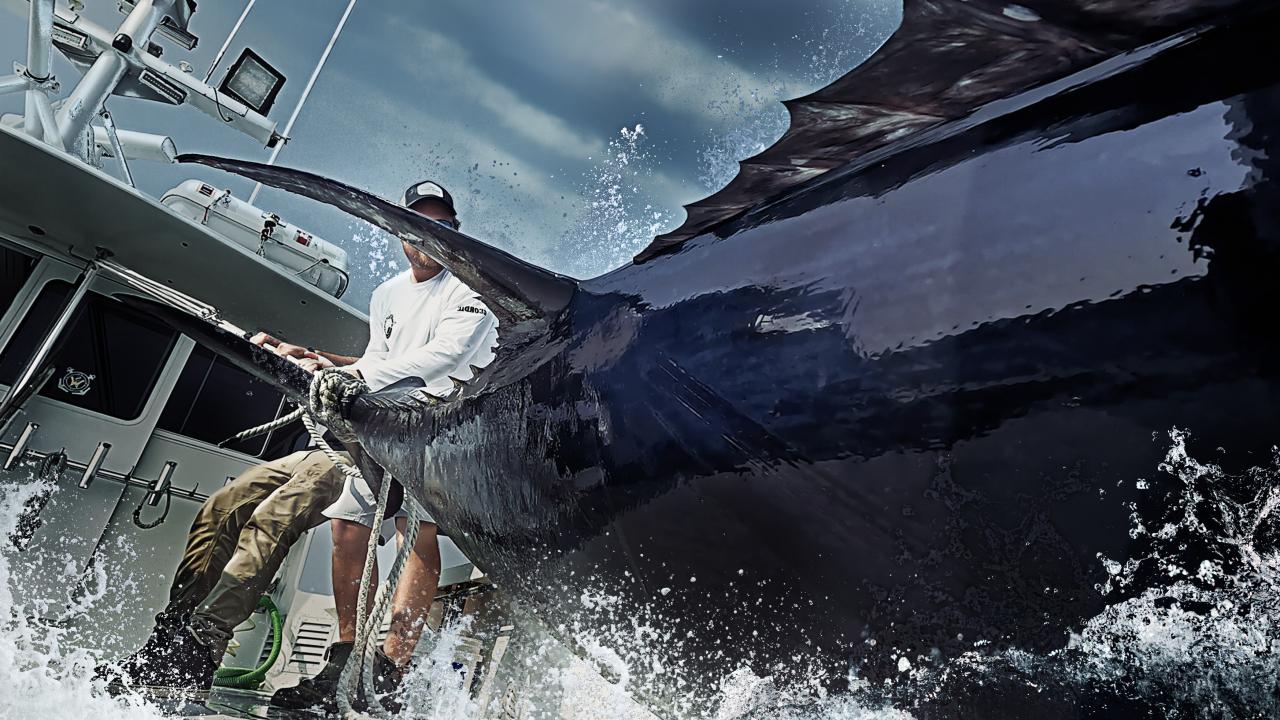- Canada
Americas
Asia & Oceania
Middle East & Africa
Europe
TV SHOWS
VIDEOS
Don't Miss
Most Viewed
Orlando Bloom: To The Edge Promo
Show: Orlando Bloom: To The EdgePhotographer S1
Show: PhotographerLawless Island S7
Show: Lawless IslandWicked Tuna S13 Promo
Show: Wicked TunaPolar Bear Cubs
Show: Wild CanadaSecrets of the Octopus Promo
Show: Secrets of the OctopusMonkey Hot Tub
Show: Wild Japan: Snow MonkeysShipwreck Treasure
Show: Wicked TunaReef Hunter
Show: Wild Survivor
PHOTOS
Photo of the day

WICKED TUNA
- HOME
- ABOUT
- VIDEOS
- PHOTOS
- LOCATION
- INTERACT
- MORE
- Plight of the Bluefin Tuna
- Still Waters: The Global Fish Crisis
- Frequently Asked Questions
- Bluefin Tuna
- Seafood Crisis: Time for a Sea Change
- Wicked Glossary
- Bluefin Tuna 101
- Gloucester: The Fishing Life
- Captain's Q&A
- Rod and Reel: Bluefin Tuna Fishing by the Numbers
- Overfishing
- 10 Things You Can Do to Save the Ocean
- Seafood Substitutions
- Cook Wise Recipes
- Bluefin Tuna Resources
- Bluefin 360
- LEARN ABOUT BLUEFIN TUNA
ROD AND REEL BLUEFIN TUNA FISHING BY THE NUMBERS
By Patrick J. Kiger
There are many ways to catch bluefin tuna—including handline, harpoon, purse-seine nets, and longlines—but U.S. fishermen overwhelmingly use rod and reel.
According to National Oceanic and Atmospheric Administration data for 2011, fishermen using rod and reel landed about 640 metric tons of Atlantic bluefin, compared to 74 metric tons using longlines and 29 metric tons using harpoons. Longlines set for other fish accidentally caught and killed thousands of bluefin which were then discarded, perhaps as much as the 120 metric tons discarded in 2010. Still, rod and reel catches represent close to 75 percent of all bluefin caught in the U.S.
The proportion of fish caught by rod and reel is remarkable considering that unlike fishermen who use purse-seine nets, rod-and-reel fishermen must catch bluefin one fish at a time, and bluefin fight long and hard to avoid being hauled in. While there don't seem to be statistics on the amount of time it typically takes to catch one, in a 1936 article for Rotarian magazine, a sport fisherman who caught a 542-pound bluefin wrote that it took him three hours and forty minutes to haul in his catch.
Rod-and-reel fishing for bluefin started in the early 1900s, and was made possible by the invention of the heavy real with a disc-clutch drag, a type of handle that would not turn backwards, according to Dave Preble's book The Fishes of the Sea: Commercial and Sport Fishing in New England. Before that, fishermen who tried to catch bluefin with rods and reels often ended up with bruised or broken knuckles.
The biggest bluefin caught in the north Atlantic with rod and reel was a fish taken off Nova Scotia in 1979, which weighed 1,496 pounds. In Massachusetts, the record is an only slightly less astonishing one, 1,228-pound fish, caught in 1984.
Bluefin fishing gear is relatively costly, with a rod and reel typically costing $1,200, according to the publication New England Sportsman. Until recently, the standard practice among professional bluefin fishermen was to use extremely heavy-duty lines and hooks. The 2001 book Tuna: Physiology, Ecology and Evolution, edited by Barbara Block and Ernest Donald Stevens, notes that "the heaviest tackle that tuna will bite on is used," and describes the typical gear as a 20-kilogram line with circle hooks. In recent years, however, fishermen have switched to lighter-weight equipment—"shy gear," in fishing lingo—which they claim is necessary because bluefin have learned not to go for the gear they previously used. The Massachusetts Division of Marine Fisheries recommends a high-quality reel spooled with a 200-pound test line.
According to one sport-fishing website, a large bluefin tuna can take about 200 yards of fishing line as it tries to get away from the fishing boat. The fisherman's goal is to gradually slow down the fish, which can swim up to 40 miles per hour at top speed, to three miles per hour.
Boats fishing for yellowfin tuna and other species in the Gulf of Mexico sometimes inadvertently hook bluefin tuna that spawn in the area as well, which poses a threat to bluefin viability. In recent years, Gulf fishermen have begun using special so-called "weak" hooks developed in part by NOAA, which are circular and lighter than their previous hooks. The idea is that these hooks will flatten/straighten under the weight of the far-heavier bluefin, and allow the fish to swim away. In two years of tests, the new hooks helped reduce the number of bluefin accidentally caught by 56 percent.
It's difficult to come up with accurate statistics, but bluefin fishermen say that most bluefin who are hooked somehow manage to get away. In an article for the New England Sportsman website, Mike Christy writes that the bluefin fishing is "90 percent preparation, nine percent disappointment and one percent success."
U.S. fishermen's catches of bluefin by so-called "handgear"—that is, rod and reel, harpoon, and handlines—peaked back in 1966 at 3,615 metric tons, according to the American Bluefin Tuna Association. The imposition of quotas has drastically reduced the U.S. catch. In 2010, the most recent year for which data is available, the handgear catch amounted to about 725 metric tons.
ADVERTISEMENT
PHOTOS

Bluefin Catch
Join these men and woman in the fishing of one of the smartest fish in the ocean and the hardest...
- All Galleries
VIDEOS
More On Society


![A Giant Pacific octopus... [Photo of the day - 25 APRIL 2024]](https://assets-natgeotv.fnghub.com/POD/15182.ThumbL.jpg)
![A lioness takes down a buffalo. This... [Photo of the day - 24 APRIL 2024]](https://assets-natgeotv.fnghub.com/POD/15180.ThumbL.jpg)
![At Quaife Engineering, Dave King and... [Photo of the day - 23 APRIL 2024]](https://assets-natgeotv.fnghub.com/POD/15178.ThumbL.jpg)







